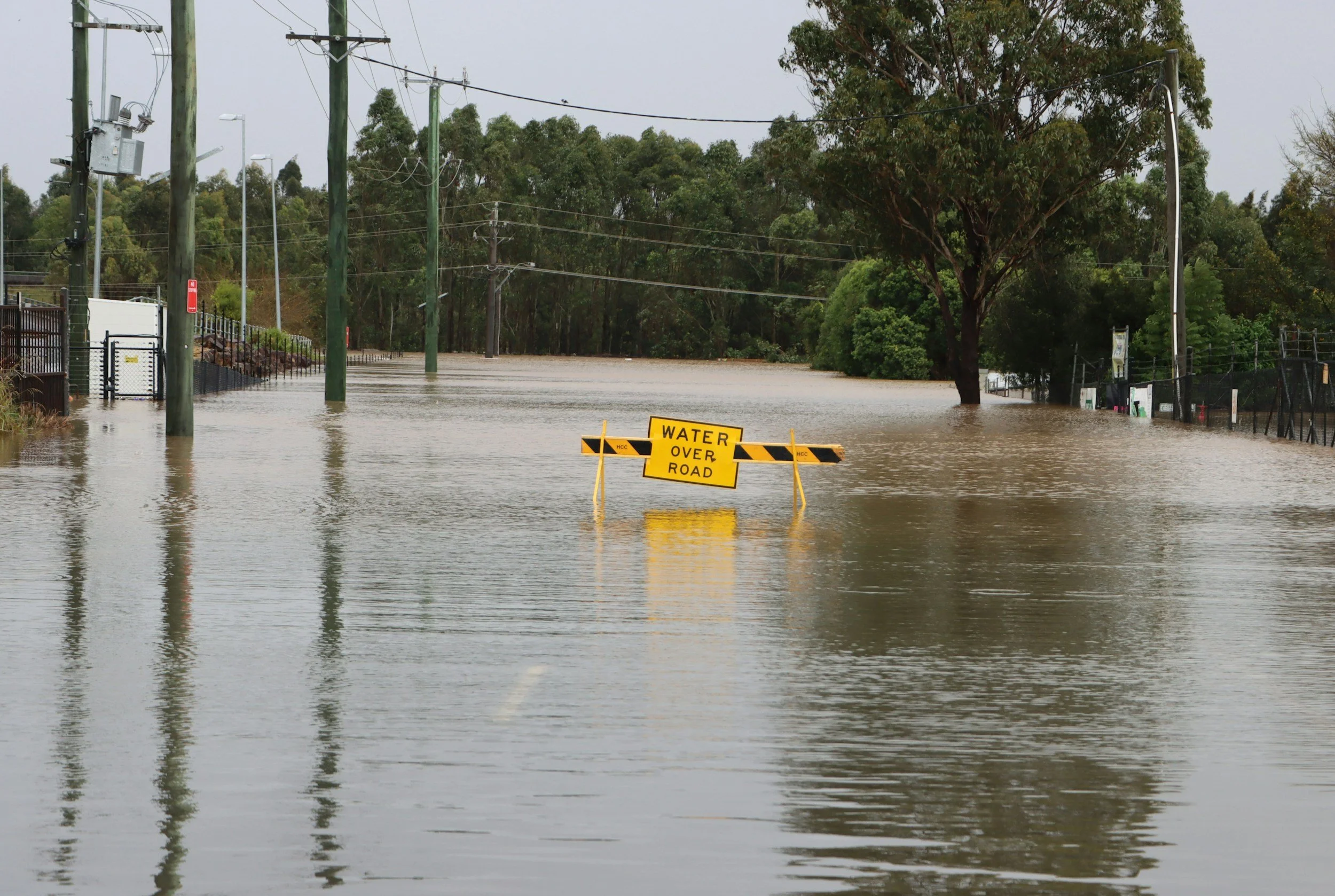Why Earthquake Insurance Is a Smart Move
Earthquakes strike without warning—and when they do, the damage can be devastating. What many homeowners don’t realize is that standard homeowners insurance does not cover earthquake damage.
That’s where earthquake insurance comes in. It helps cover the cost to repair or rebuild your home, replace damaged belongings, and even pay for temporary living expenses if your home becomes uninhabitable.
Why It Matters:
Most major earthquakes happen with no warning.
Repairs can cost tens or even hundreds of thousands of dollars.
Earthquake coverage is often more affordable than people think, especially if added to an existing policy.
If you live in a quake-prone area—like California, Oregon, or Washington—earthquake insurance isn’t just a good idea, it’s essential.
Don’t wait for the ground to shake. Protect your home and your future today.
Why Homeowners Need Life Insurance
Buying a home is a major milestone—but it also comes with a big responsibility: your mortgage. Life insurance helps protect your family from financial stress if something happens to you.
1. Protect Your Family and Home
If you pass away unexpectedly, your life insurance can pay off the remaining mortgage. This keeps your loved ones from losing the home or taking on heavy debt.
2. Keep Your Home in the Family
Your home is part of your legacy. A life insurance payout ensures your family can stay in the house or decide what to do with it—without financial pressure.
3. Affordable Peace of Mind
Term life insurance can match your mortgage length and is often more affordable than people think. For a small monthly cost, you secure your family’s future.
4. Complements Homeowners Insurance
Homeowners insurance protects your property from damage—life insurance protects your family’s ability to keep it.
In short:
Life insurance isn’t just about money—it’s about keeping your home, your security, and your peace of mind intact.
Why You Can’t Buy Flood Insurance During Flood Season
Many homeowners are surprised to learn that you can’t purchase flood insurance at the last minute—especially during flood season. That’s because most flood insurance policies, including those from the National Flood Insurance Program (NFIP), come with a 30-day waiting period before coverage kicks in.
This rule is designed to prevent people from only buying insurance when a storm is already on the way. Insurance is meant to protect against unexpected events—not immediate or known risks.
So, if flood season has already started or a major storm is forecasted in your area, it’s often too late to get coverage in time.
Why This Matters:
Once a flood watch or warning is issued, insurers typically won’t issue new policies.
Without flood insurance, you’re responsible for all damage out of pocket—and most homeowners policies don’t cover flooding.
The average flood claim is over $30,000, even from just a few inches of water.
The best time to get flood insurance is before you need it. Don’t wait for the rain to start—prepare now, and protect your home and peace of mind.
Auto Insurance in 2025: What’s Going On?
The auto insurance industry continues to face rising costs in 2025. Premiums are still climbing due to inflation, higher repair costs, and new import tariffs. Vehicles with advanced tech are safer but more expensive to fix—driving rates up despite fewer accidents.
Consumers are feeling the pinch and shopping around more than ever. Auto insurance quote activity is up 16%, and many are switching carriers to find better deals.
Usage-based insurance (UBI) and subscription models are growing fast, offering personalized pricing and flexibility. Telematics and driving behavior tracking are helping safe drivers save money.
At the same time, insurers are embracing AI-powered claims, digital tools, and mobile experiences to improve service and efficiency. Legal action—like the new lawsuit against Tesla Insurance in California—signals growing scrutiny on how claims are handled.
Bottom line: Expect more digital innovation, smarter pricing models, and a continued focus on affordability as both insurers and drivers adapt to a rapidly changing landscape.
A Quick Guide to Commercial Life Insurance
Commercial life insurance helps businesses protect against the financial loss caused by the death of key individuals. Unlike personal life insurance, these policies are owned by the business, which also pays the premiums and receives the benefits.
Common Types of Commercial Life Insurance
Key Person Insurance: Covers vital employees or executives; helps offset lost revenue or recruitment costs after their death.
Buy-Sell Agreement Insurance: Ensures surviving business partners can buy out a deceased partner’s share.
Group Life Insurance: Offered to employees as part of benefits packages to improve retention and morale.
Loan Protection Insurance: Ensures business debts can be paid if a key person passes away.
Benefits
Ensures business continuity
Supports succession planning
Enhances financial security
Helps with employee recruitment and retention
May offer tax advantages
Key Considerations
Before purchasing, businesses should assess who needs coverage, the right policy type and amount, and potential legal/tax impacts.
Conclusion
Commercial life insurance is a smart tool for managing risk, protecting operations, and planning for the future. It’s especially important for companies reliant on key individuals or planning ownership transitions.
Why Is My Insurance Premium Going Up If I Haven’t Filed Any Claims?
Even if you haven’t filed a claim, your insurance premium can rise due to factors outside your control. Here's why:
1. Rising Costs
Repair, medical, and legal costs are increasing, which drives up premiums for everyone.
2. Local Risk Changes
More accidents, crime, or natural disasters in your area can raise premiums, even if you're not directly affected.
3. Reinsurance and Regulations
Insurance companies may face higher reinsurance costs or regulatory changes and pass those costs to customers.
4. Company Strategy
Your insurer may adjust pricing to stay profitable, especially if they’ve had high claim payouts overall.
5. Policy or Credit Changes
Small policy adjustments or a drop in your credit score can also affect your premium.
What You Can Do:
Shop around for better rates
Ask about discounts
Raise your deductible
Review your coverage
Bottom Line:
Premiums are influenced by more than just your claims history. Understanding the bigger picture can help you manage costs and make smart coverage choices.
Commercial Insurance
Commercial insurance protects businesses from financial loss due to accidents, lawsuits, property damage, and other risks. It’s essential for keeping operations running smoothly and legally.
Common Types of Commercial Insurance
General Liability – Covers injuries, property damage, and legal costs.
Property Insurance – Protects buildings, equipment, and inventory.
Workers’ Compensation – Covers employee injuries and required in most states.
Commercial Auto – Insures business vehicles.
Professional Liability – Protects against claims of errors or negligence.
Cyber Insurance – Covers data breaches and digital threats.
Business Interruption – Replaces lost income during shutdowns.
Why It Matters
Shields your business from costly risks
Ensures legal compliance
Builds credibility with clients and lenders
Allows you to focus on growth, not threats
Final Thought
Commercial insurance isn’t just protection—it’s smart business planning. The right coverage can help your company survive and thrive through the unexpected.
Why Insurance Matters?
It all begins with an idea.
Why Insurance Is Important to Have: Protecting Your Future and Peace of Mind
At its core, insurance is the transfer of financial risk. It involves transferring the potential financial burden of unforeseen events from an individual or entity to an insurance provider, in exchange for a premium. This allows individuals and businesses to manage risk more effectively and protect themselves against significant financial loss.
Life is full of unexpected twists—accidents, natural disasters, illness, and even death can come without warning. While we can't always prevent these events, we can prepare for them. That’s where insurance comes in. Whether it's health, auto, home, or life insurance, having the right coverage offers crucial financial protection and peace of mind. Here’s why insurance is so important to have.
1. Financial Security in Unpredictable Situations
One of the most compelling reasons to have insurance is to avoid a financial crisis. Medical emergencies, car accidents, or property damage can cost thousands—or even hundreds of thousands—of dollars. Insurance helps cover these costs so that you’re not left to pay them entirely out of pocket. For example:
Health insurance helps cover medical bills, hospital stays, and even prescriptions.
Auto insurance covers repair costs, liability, and medical expenses after a car accident.
Homeowners or renters insurance protects your belongings and home from damage or theft.
Life Insurance provides financial protection and stability for beneficiaries in the event of the policyholder's death.
Without insurance, you could face severe financial hardship, even bankruptcy, from a single unexpected event.
2. Peace of Mind
Knowing you’re covered in case of an emergency offers peace of mind. Instead of constantly worrying about “what ifs,” you can live your life with the confidence that you're prepared for the unexpected. Insurance is not just about money—it’s also about reducing stress during already difficult times.
3. Legal or Loan Requirements
In many cases, insurance isn’t just optional—it’s required:
Auto insurance is legally required in most places to drive.
Homeowners insurance is often required by mortgage lenders.
Health insurance may be required under certain national health care systems or employer plans.
Having insurance can also make it easier to secure loans or rent property, as it signals financial responsibility and protects the lender or landlord’s interests as well.
4. Protection for Loved Ones
Life insurance, in particular, helps protect your loved ones if something happens to you. It ensures they’re not burdened with debts or expenses during an emotionally difficult time. It can help pay for funeral costs, replace lost income, and even fund education for your children.
5. Supports a Stronger Society
When people have insurance, the financial burden of disasters and emergencies doesn’t fall solely on individuals or public resources. Insurance spreads the risk among many, creating a safety net that helps keep society functioning smoothly even in times of crisis.
Final Thoughts
Insurance isn’t about expecting the worst—it’s about being prepared just in case. It allows you to recover more quickly, maintain financial stability, and support those around you when life takes an unexpected turn. In a world where so much is out of our control, insurance is one of the most practical tools we have to protect ourselves and our future.
If you don’t have insurance or haven’t reviewed your coverage in a while, now’s a good time to assess your needs. Your future self—and your loved ones—will thank you.
Understanding Life Insurance and the Value of Living Benefits
It all begins with an idea.
Life insurance is traditionally viewed as a safety net for your family after your death. However, in recent years, life insurance policies have evolved to offer more than just a death benefit. One significant advancement is the inclusion of living benefits, which allow policyholders to access certain portions of their life insurance before they pass away. These benefits can be invaluable in times of need, providing financial support during life’s most challenging moments.
What is Life Insurance?
At its core, life insurance is a contract between an individual and an insurance company, where the individual agrees to pay regular premiums in exchange for a lump-sum benefit upon their death. This death benefit is designed to provide financial security to beneficiaries—such as family members or loved ones—who may depend on the policyholder for financial support.
Life insurance policies come in various forms, with the most common types being:
Term Life Insurance: Provides coverage for a specified period (e.g., 10, 20, or 30 years). If the policyholder passes away during this term, beneficiaries receive the death benefit.
Whole Life Insurance: Offers lifetime coverage and includes a savings component, which builds cash value over time.
Universal Life Insurance: A flexible policy that allows policyholders to adjust their premiums and death benefits as their financial situation changes.
While these are the basic structures, today’s policies offer a range of customizable options to better fit an individual’s needs.
What Are Living Benefits?
Living benefits, also known as accelerated death benefits, are provisions within a life insurance policy that allow policyholders to access their death benefit while they are still alive. These benefits are typically triggered by a serious illness or injury and can be used for a variety of purposes, including:
Critical Illness Coverage
Many life insurance policies include critical illness riders, which allow policyholders to access a portion of their death benefit if they are diagnosed with a severe illness such as cancer, heart disease, or a stroke. These funds can help cover medical expenses, treatment costs, or even daily living expenses during recovery.Chronic Illness Coverage
If a policyholder is diagnosed with a chronic illness that impairs their ability to perform activities of daily living (ADLs), they may be able to access living benefits. Conditions such as severe arthritis, Alzheimer’s disease, or neurological disorders may qualify for chronic illness benefits, providing financial relief during a time of considerable stress.Terminal Illness Coverage
If a policyholder is diagnosed with a terminal illness, meaning they have a limited life expectancy (usually less than 12 to 24 months), living benefits can be accessed. These funds can help with end-of-life care, hospice services, or any financial obligations the individual may wish to address before passing away.
Why Are Living Benefits Important?
Living benefits add significant value to a life insurance policy by ensuring that policyholders are not left without resources during a time of crisis. Here's why they matter:
Financial Flexibility During Hardship
Living benefits provide an essential financial cushion when facing life-threatening or chronic health issues. Instead of having to dip into savings, sell assets, or rely on loans, individuals can access funds they’ve already paid into their life insurance policy.Helps Manage Medical Expenses
The cost of medical treatments, hospital stays, and long-term care can quickly become overwhelming. Living benefits help policyholders manage these expenses without worrying about depleting their savings or leaving a financial burden on their family.Peace of Mind
Knowing that you have access to funds if faced with a critical illness or terminal diagnosis offers peace of mind. It reduces stress and provides a sense of control in what can otherwise be a tumultuous and uncertain time.Provides Choices for Care
With living benefits, policyholders can choose the type of care that best suits their needs, whether it's medical treatments, in-home care, or even modifications to their living situation to accommodate their condition. This flexibility ensures that they have the resources to maintain a certain quality of life.
How to Access Living Benefits
Accessing living benefits usually involves a straightforward process. The policyholder must provide proof of diagnosis, such as a doctor’s report, and may need to meet specific conditions outlined in their policy. Once approved, the insurer will release a portion of the death benefit to the policyholder, which can be used as needed.
It’s important to note that accessing living benefits will reduce the death benefit available to beneficiaries upon the policyholder’s passing. For example, if $100,000 is the original death benefit and $50,000 is withdrawn for living benefits, the remaining $50,000 will be paid to the beneficiaries after the policyholder’s death.
Conclusion: Life Insurance with Living Benefits—A Valuable Tool for Financial Protection
Life insurance is no longer just about providing for loved ones after death—it’s about offering financial support during life’s most difficult moments. Living benefits add an important layer of protection, ensuring that individuals facing serious health challenges have access to financial resources when they need them most.
As you evaluate your life insurance options, consider policies that include living benefits. They not only provide a safety net for your family after you’re gone, but they also offer financial relief and flexibility in times of critical illness or chronic health conditions.










